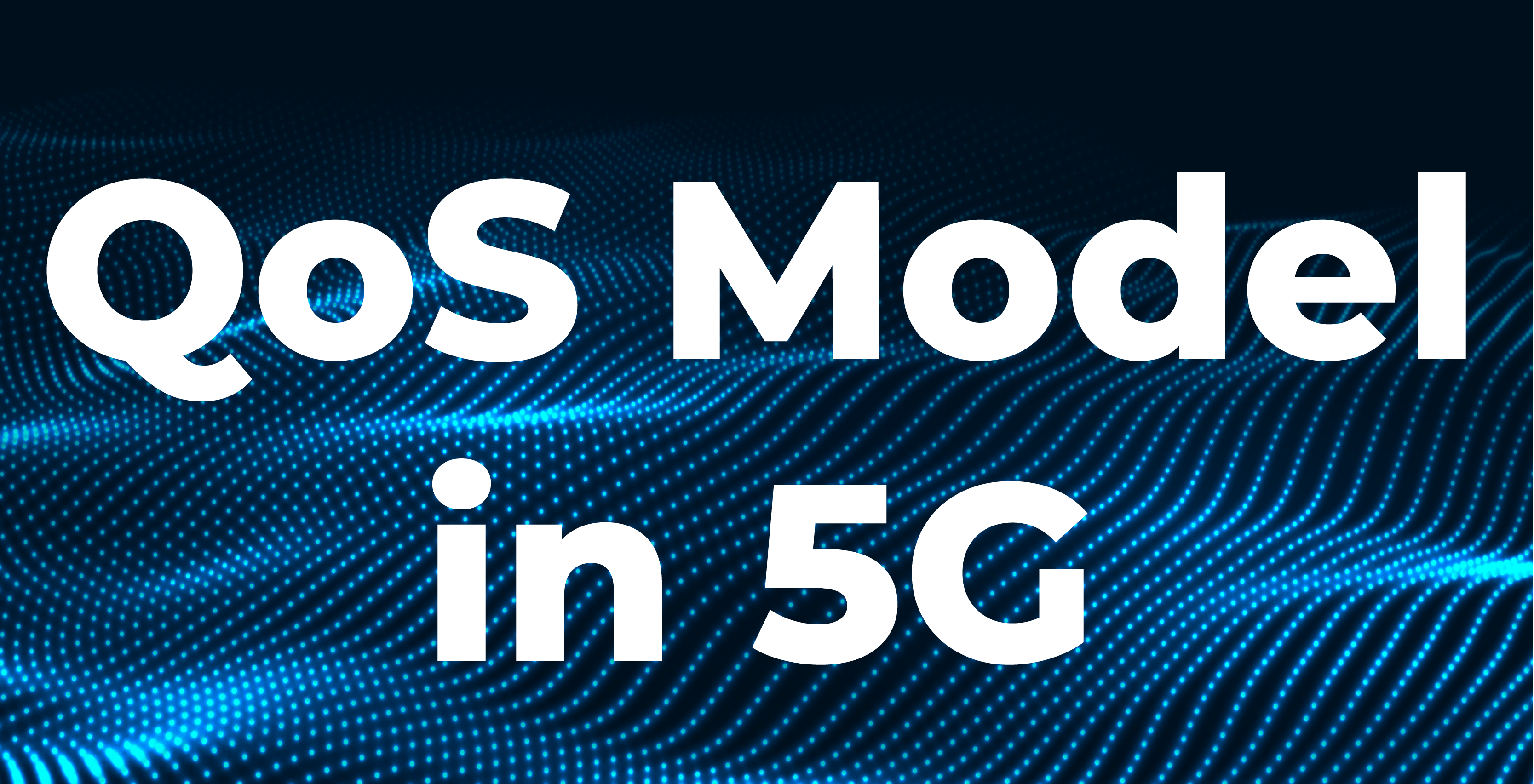
5G promises a range of capabilities from downloading a movie in under 10 seconds to supporting real-time low-latency factory automation or self-driving cars. This range of capabilities requires that the Quality of Service (QoS) characteristics, such as delay, error rate, and priority be specified and enforced. 5G enhances the QoS options compared to 4G LTE.
Let’s begin with the UE that has an application wanting to communicate with a Data Network (DN) specified by a Data Network Name (DNN). The UE sets up a PDU session to the DN, where all communication with the DN would take place. If the DN is the internet, the user may check their email, open Facebook, browse the internet, or watch a YouTube video. Each application interaction requires an end-to-end packet flow, which is called a Service Data Flow (SDF). In this example, there would be four SDFs to the internet DN, one for each application within one PDU session. Each SDF can be associated with a 5G QoS Flow with a specific QoS definition that can be assigned. For our example, all four SDFs may be associated with a given 5G QoS Flow that has the same best effort QoS.
5G enhances the QoS control within the network. One or more SDFs with the same QoS characteristics are grouped together in a 5G QoS flow. The 5G QoS flow is the most granular measure of QoS in the 5G network and the level at which QoS is enforced. If an SDF requires a different set of QoS characteristics, then another 5G QoS flow is defined to meet the requirements. Each QoS flow is identified by a QoS Flow Identifier (QFI), which lets the network elements know which flow to map the SDF.
Each QoS flow is defined by a QoS profile. The QoS profile identifies the 5G QoS characteristics with a 5G QoS Identifier (5QI) and Allocation and Retention Priority (ARP) parameters, which define a Priority Level (PL) and whether the QoS flow can pre-empt another flow or if it can be pre-empted. The ARP can be used for admission control. The ARP values determine which flow takes precedence. Like 4G, 5G QoS provides a Non-Guaranteed Bit Rate (Non-GBR) and Guaranteed Bit Rate (GBR) classification. In 5G, GBR and Non-GBR classifications are at the QoS flow level and are part of the QoS profile. For Non-GBR flows, there is an Aggregate Maximum Bit Rate (AMBR) that limits the overall usage across all SDFs within that QoS flow. For GBR flows, there is a Guaranteed Flow Bit Rate (GFBR), as well as a Maximum Flow Bit Rate (MFBR) and a maximum packet loss rate.
The SMF manages the PDU session and hence related QoS flows and assigns a QFI and QoS profile to the flow based on information provided by the Policy Control Function (PCF). The SMF then provides the User Plane Function (UPF) with the Packet Detection Rules (PDRs) for mapping SDFs to the QoS flows. The SMF sends the QoS profile to the next-generation Node B (i.e., gNB) via the AMF. The gNB can map the 5G QoS Flow to a specific Data Radio Bearer (DRB) on the radio interface. The AMF conveys the QoS rules to the UE to aid in mapping SDF flows to a 5G QoS flow and the correct DRB.
5G enhances how the QoS is characterized and enforced. The PCF, the SMF, the AMF, the gNB, the UPF, and the UE all work together to enforce the QoS requirements.
About the Author
Prasad joined Award Solutions in 2014 and has over 25 years of wireless and internet technologies experience as he combines his passions for technology and teaching. He has a wealth of technical and management expertise which includes R&D, software development, systems architecture, product management and business development.
About Award Solutions, Inc.
Award Solutions is the trusted training partner to the world's best networks. We help companies tackle new technologies by equipping their teams with knowledge and skills. Award Solutions invests heavily in technology, research, engineering, and labs to ensure our customers make the most of their resource and network investments.
Award has expertise across all technologies that touch wireless: 5G, Artificial Intelligence, Machine Learning, Network Virtualization, Data Visualization, Data Manipulation, 4G LTE, and more.
